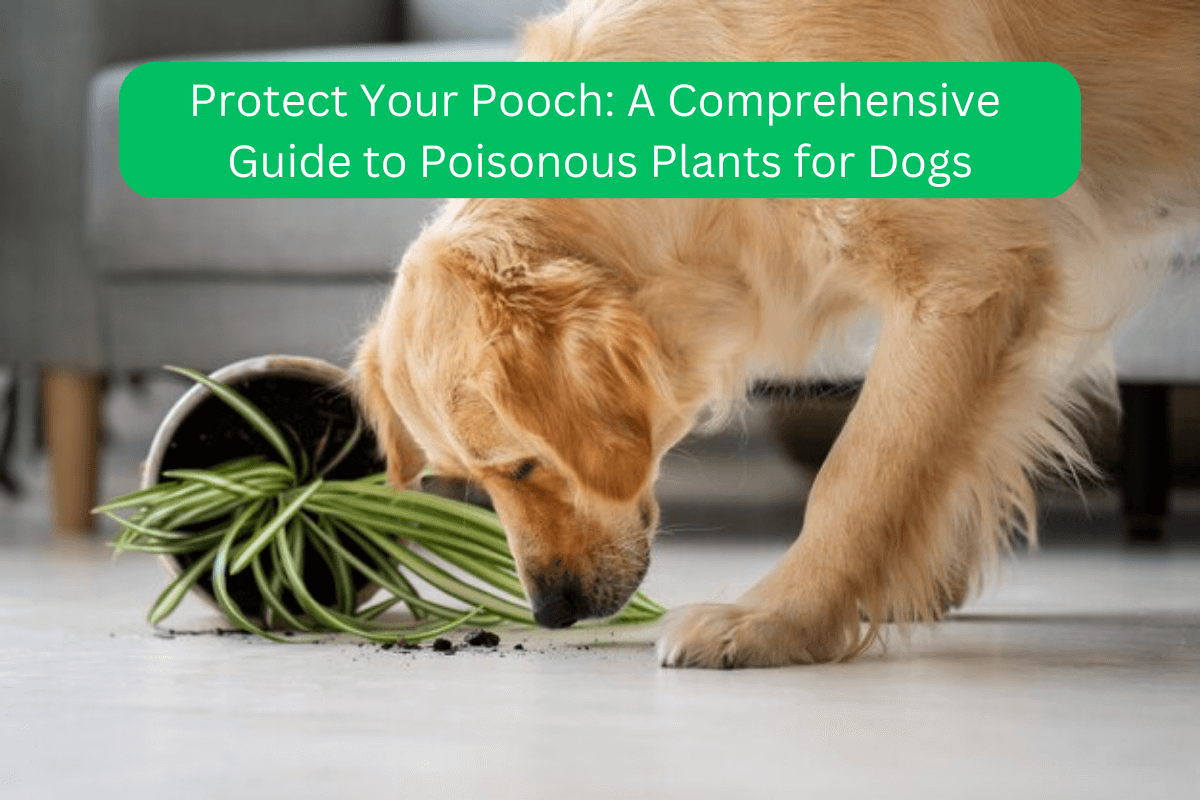
Protect Your Pooch: A Comprehensive Guide to Poisonous Plants for Dogs
Dogs are beloved members of our families, and it’s our responsibility to keep them safe and healthy. One aspect of their well-being that’s often overlooked is their interaction with the plant life in and around our homes. Many common plants can be toxic to dogs, causing various health issues, from mild irritation to life-threatening conditions. In this comprehensive guide, we’ll explore the world of poisonous plants for dogs, helping you identify and avoid potential dangers in your environment.
Why Do You Need to Know About Poisonous Plants?
Understanding the risks associated with poisonous plants is crucial for dog owners. Dogs are naturally curious creatures, often exploring the world around them with their noses and mouths. This means they can quickly come into contact with toxic plants indoors and in your garden. Recognizing these potential hazards can prevent unnecessary health problems for your furry friend.
Also Read This : How to Propagate Roses Using Potato Cuttings
Top 10 poisonous plants for dogs
Our four-legged companions bring joy and happiness; our pet owner must ensure their safety and well-being. One often overlooked aspect of pet safety is the presence of poisonous plants in and around our homes. Many common garden plants and houseplants can harm or even kill dogs. To help you protect your furry friend, we’ve compiled a list of the top 10 poisonous plants for dogs. Familiarize yourself with these dangers to keep your canine companion safe.
Also Read This : Fascinating Plant Fun Facts
Here’s a list of some common plants that are toxic to dogs:
- Azalea (Rhododendron spp.)
- Oleander (Nerium oleander)
- Sago Palm (Cycas revoluta)
- Autumn Crocus (Colchicum autumnale)
- Lilies (Lilium spp.)
- Rhododendron (Rhododendron spp.)
- Castor Bean Plant (Ricinus communis)
- Daffodils (Narcissus spp.)
- Foxglove (Digitalis purpurea)
- Tulips (Tulipa spp.)
Azalea (Rhododendron spp.)
These beautiful flowering shrubs contain toxins that can cause vomiting, diarrhoea, drooling, and even potentially lethal heart issues when ingested by dogs.
Also Read This : Enhance Your Gardening with Grow Bags
Oleander (Nerium oleander)
Oleander is highly toxic to dogs, with all parts of the plant being dangerous. Ingestion can lead to severe heart problems, digestive issues, and, in some cases, fatalities.
Sago Palm (Cycas revoluta)
Every part of the sago palm is toxic, but the seeds are particularly harmful. Ingesting any portion of this plant can lead to liver failure and neurological symptoms in dogs.
Autumn Crocus (Colchicum autumnale)
This flowering plant is highly toxic and can cause severe organ damage, gastrointestinal distress, and even death if consumed by dogs.
Also Read This : Utilizing Grow Lights for Indoor Plant Cultivation
Lilies (Lilium spp.)
Lilies are especially dangerous for cats but can also harm dogs, causing kidney failure when ingested.
Rhododendron (Rhododendron spp.)
Rhododendrons contain toxins that can lead to digestive problems, drooling, and more severe symptoms if ingested by dogs.
Castor Bean Plant (Ricinus communis)
The seeds of the castor bean plant are particularly toxic, causing severe symptoms and potential death if ingested by dogs.
Also Read This : How to Prune Lavender: A Step-by-Step Guide
Daffodils (Narcissus spp.)
Daffodils can lead to vomiting and diarrhoea, with the bulbs being the most toxic part of the plant for dogs.
Foxglove (Digitalis purpurea)
Foxglove is a highly toxic plant that affects the heart and other vital organs when ingested by dogs.
Also Read This : Seasonal Planting: What to Plant in October for Success
Tulips (Tulipa spp.)
Ingesting tulip bulbs can lead to gastrointestinal distress and other symptoms in dogs, making it essential to keep them out of your pet’s reach.
Identifying Poisonous Plants
Recognizing poisonous plants is the first step in keeping your dog safe. Look for warning signs like wilted leaves, thorns, or specific plant names in the list above. If you need clarification on a particular plant in your home or garden, consult a local nursery or a veterinarian.
Also Read This : How to Start Your Perennial Vegetable Garden
Creating a Safe Environment
Protecting your dog from poisonous plants involves some practical steps:
Regularly inspect your garden: Keep an eye on your outdoor space and remove any toxic plants or shrubs.
Restrict access: Use barriers or fencing to protect your dog from potentially harmful plants.
Educate yourself: Familiarize yourself with the plants in and around your home.
Provide alternatives: Offer safe, dog-friendly plants and herbs to enjoy.
Also Read This : Ants in Your Planters? Try These Quick and Effective Solutions!
What to Do If Your Dog Ingests a Poisonous Plant
Accidents happen, and if your dog consumes a toxic plant, it’s essential to act quickly:
Contact your veterinarian: Seek professional advice immediately. Time can be critical.
Take a sample: Bring a sample of the plant with you to the vet for identification.
Don’t induce vomiting: This can sometimes worsen the situation, so follow your vet’s instructions.
Also Read This : How to Identify and Control Pests on Cacti
Your dog’s safety and well-being depend on your vigilance and awareness of potential dangers, including poisonous plants. By learning about these threats and taking proactive steps to create a safe environment, you can enjoy a healthy and happy life with your furry companion. Always consult your veterinarian for specific guidance, and remember that prevention is the key to keeping your pooch out of harm’s way.
Also Read This : Engaging and Fun Gardening Activities to Inspire Creativity in Kids




